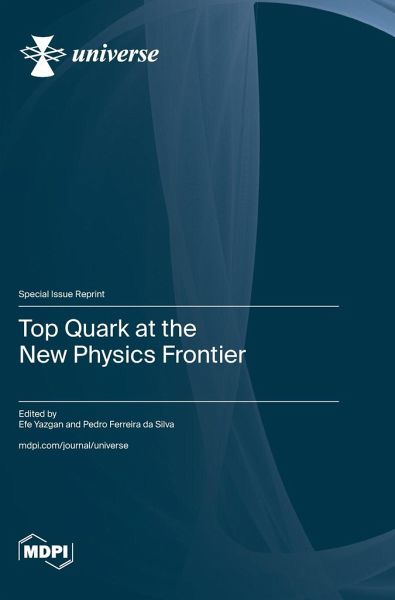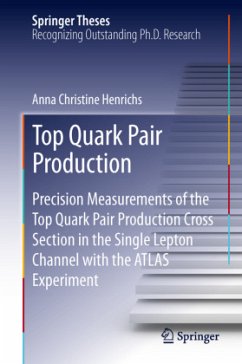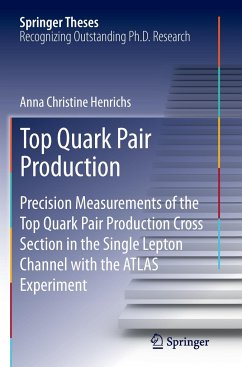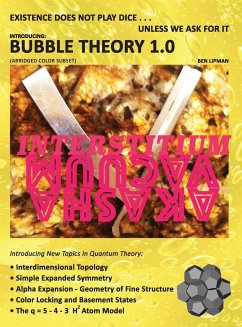
Top Quark at the New Physics Frontier
Versandkostenfrei!
Versandfertig in 1-2 Wochen
95,99 €
inkl. MwSt.

PAYBACK Punkte
48 °P sammeln!
The hunt for top quarks began back in the 1970s after the proposal of the sixquark model by Kobayashi and Maskawa, and it was discovered in 1995 at the Fermilab Tevatron. It was experimentally established by five different experiments in different production modes and a variety of collision energies. At the CERN Large Hadron Collider (LHC), top quark-antiquark pairs are routinely produced at a rate of about six per minute, enabling experiments to make detailed measurements of the properties of top quarks. The analysis of the data collected at the Tevatron and the LHC experiments has revealed, ...
The hunt for top quarks began back in the 1970s after the proposal of the sixquark model by Kobayashi and Maskawa, and it was discovered in 1995 at the Fermilab Tevatron. It was experimentally established by five different experiments in different production modes and a variety of collision energies. At the CERN Large Hadron Collider (LHC), top quark-antiquark pairs are routinely produced at a rate of about six per minute, enabling experiments to make detailed measurements of the properties of top quarks. The analysis of the data collected at the Tevatron and the LHC experiments has revealed, so far, good agreement with the standard model (SM) predictions. The top quark is the most massive elementary particle identified to date: not only does it have a privileged Yukawa coupling to the Higgs boson, but its mass is also significantly higher than that of the Higgs boson. Owing to its large mass, the top quark decays before hadronization, making the study of "bare" quark properties possible in experimental settings. Therefore, top quark physics simultaneously pushes the frontiers of quantum chromodynamics, electroweak, and flavor physics. The aim of this reprint is to provide a comprehensive review of the status and prospects of top quark physics at the LHC and possible future colliders. We have included articles that especially emphasize where the present understanding is incomplete and suggest new directions for research in this area.














